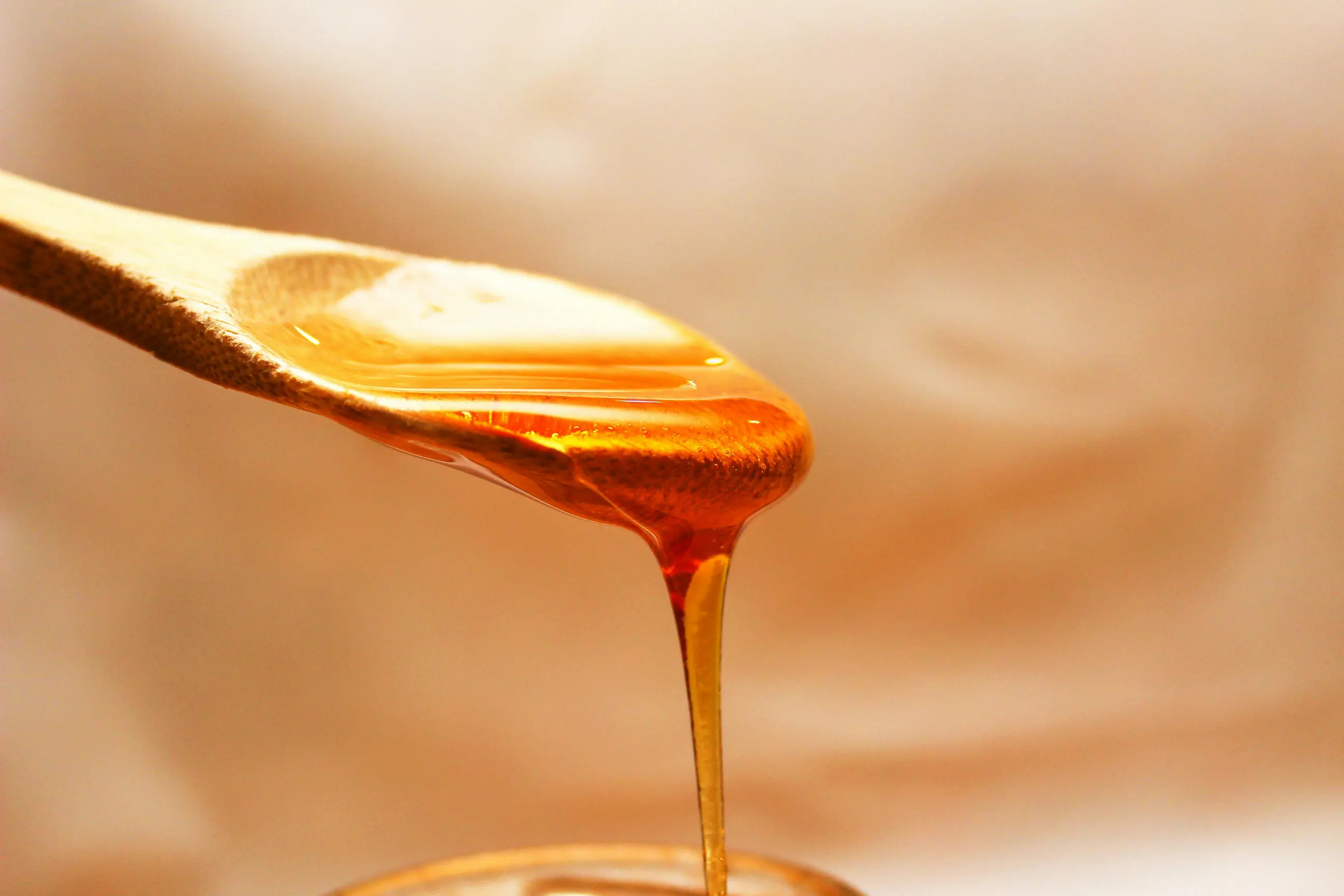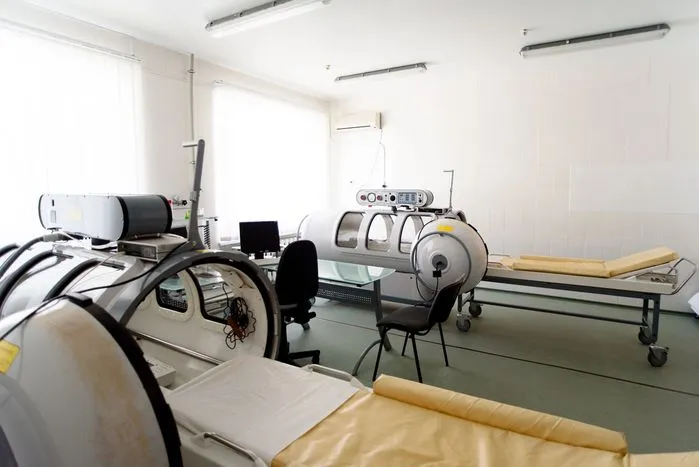Wound care is essential to healthcare, requiring effective and scientifically backed solutions to promote healing and prevent complications. One of the most promising natural remedies in modern wound management is medical-grade honey, specifically Therahoney. This sterile, high-quality honey product has gained widespread recognition for its remarkable antibacterial, anti-inflammatory, and tissue-regenerating properties.
Therahoney is more than just a natural remedy—it is a clinically validated treatment designed to support healing for a wide range of wounds, from minor cuts to chronic ulcers. With its ability to create a moist healing environment, assist in autolytic debridement, and provide powerful antimicrobial effects, Therahoney has become a trusted choice for healthcare professionals and patients.
This blog explores the science behind Therahoney, its key benefits in wound healing, and how it compares to other medical honey products. We also provide best practices for using Therahoney in wound care management to ensure optimal healing outcomes.
What Does Medical Honey Do for a Wound?
Medical honey like Therahoney is essential in wound care because of its natural healing properties. Made from 100% sterile, medical-grade honey, Therahoney is specifically designed to support the healing process. Its many benefits make it suitable for wounds from minor cuts to chronic ulcers.
1. Natural Antibacterial and Antimicrobial Properties
One of the best benefits of Therahoney is its strong antibacterial and antimicrobial properties. Medical honey has a high concentration of natural sugars, creating an osmotic effect that draws out moisture from bacteria, dehydrates, and kills harmful microorganisms. Honey also produces low hydrogen peroxide levels, acting as a natural antiseptic without harming healthy tissue. This reduces the risk of infection, making Therahoney a reliable choice for preventing complications in wound care.
2. Moist Wound Healing Environment to Support Tissue Regeneration
A principle in wound care is maintaining a moist environment that promotes faster healing and less scarring. Therahoney forms a barrier over the wound and retains moisture, keeping the wound bed hydrated and supporting skin tissue regeneration. By preventing the wound from drying, Therahoney facilitates the movement of new skin cells and encourages proper wound closure.
3. Helps Remove Dead Tissue Through Autolytic Debridement
Dead or damaged tissue can slow the healing process and increase the risk of infection. Therahoney helps in the natural removal of dead tissue through autolytic debridement. This means it softens and breaks down necrotic (dead) tissue, making it easier for the body to remove debris without painful or harsh manual debridement. By promoting a cleaner wound bed, Therahoney allows healthy tissue to regenerate more efficiently.
4. Reduces Inflammation and Promotes Faster Healing
Chronic wounds often suffer from prolonged inflammation that can delay healing and be uncomfortable. Therahoney has natural anti-inflammatory properties that reduce swelling and irritation. Soothing the wound and minimizing inflammation creates a more favorable healing environment. Plus, its antibacterial and moisture-retentive properties contribute to faster overall recovery time.
Understanding Therahoney and Its Benefits
Therahoney is a powerful medical-grade honey product designed to support wound healing through its natural antibacterial, anti-inflammatory, and tissue-regenerating properties. As a key player in advanced wound care, Therahoney provides a practical and natural approach to managing various wound types while minimizing the risk of infection and promoting faster recovery.
What is Therahoney?
Therahoney is a sterile, 100% medical-grade Manuka honey product used in wound care. It is derived from Leptospermum scoparium, a plant species known for producing honey with exceptional healing properties. Unlike regular honey, Therahoney undergoes rigorous purification to remove contaminants while preserving its beneficial bioactive compounds. This ensures it remains safe and effective for clinical use.
Therahoney's high sugar content creates an osmotic effect that helps draw out excess moisture from wounds, reducing bacterial growth while maintaining a moist wound environment. Its naturally low pH also helps regulate wound acidity, supporting the body's natural healing mechanisms.
Key Benefits of Therahoney Gel for Wound Care
Therahoney Gel is one of the most commonly used formulations for wound management. This thick, easy-to-apply gel provides numerous benefits, including:
- Antibacterial and Antimicrobial Protection—Therahoney's natural hydrogen peroxide offers broad-spectrum antibacterial activity, helping to prevent and combat infections without synthetic antibiotics.
- Moist Wound Healing Environment – The gel's consistency helps retain moisture in the wound bed, promoting tissue regeneration and reducing the likelihood of scarring.
- Autolytic Debridement – Therahoney assists in the gentle removal of necrotic (dead) tissue by softening and breaking it down, allowing the body to clear it away naturally.
- Reduces Inflammation and Pain—Therahoney's anti-inflammatory properties help decrease swelling, redness, and discomfort, leading to a more comfortable healing process.
- Non-Toxic and Safe for Various Wound Types – Since it is a natural product free from harsh chemicals or additives, Therahoney is safe to use on a wide range of wounds, including those in sensitive areas.
Therahoney Gel Uses for Different Wound Types
Thanks to its versatile healing properties, Therahoney Gel is used to treat various types of wounds, including:
- Burns – Helps soothe burned skin, reduce the risk of infection, and accelerate healing by maintaining a protective barrier over the affected area.
- Pressure Ulcers (Bedsores) – Provide moisture to prevent further skin breakdown and promote tissue regeneration in pressure-induced wounds.
- Diabetic Foot Ulcers – Reduces bacterial load and supports wound closure in individuals with diabetes who experience slow-healing foot ulcers.
- Surgical Wounds – Protects incisions from infections and encourages faster tissue repair post-surgery.
- Venous Leg Ulcers – Helps manage chronic ulcers caused by poor circulation by promoting autolytic debridement and reducing inflammation.
- Traumatic Wounds and Lacerations – Acts as a natural dressing to shield open wounds while speeding up healing.
By incorporating Therahoney into wound care protocols, patients and healthcare professionals can use its scientifically backed benefits to achieve better healing outcomes.
Is Therahoney the Same as Manuka Honey?
Many wonder if Therahoney is the same as Manuka honey, as both are known for their medicinal properties. While Therahoney is made from medical-grade Manuka honey, it is processed to meet clinical standards for wound care. This means Therahoney is filtered, sterilized, and prepared for hospital use. Even if labeled as raw or pure, standard Manuka honey is not necessarily processed to meet medical sterility requirements.
One of the main differences between Therahoney and Manuka honey is its antibacterial properties. Therahoney relies mainly on releasing hydrogen peroxide, which gives a broad-spectrum antibacterial effect. Manuka honey is rich in Methylglyoxal (MGO), which fights bacteria at a lower pH level. Both kinds of honey promote wound healing, but Therahoney is designed to be safe and effective for medical use so patients can get a product free from contaminants or impurities that can delay healing.
When comparing wound healing properties, Therahoney and Manuka honey create a moist wound environment, reduce inflammation, and assist in autolytic debridement by breaking down dead tissue. But Therahoney's medical-grade preparation makes it more suitable for clinical use, especially for chronic wounds, burns, and pressure ulcers. Manuka honey may be ideal for minor cuts and burns, but Therahoney is a more reliable choice for severe wounds that require consistent antibacterial protection and optimal moisture control.
Therahoney vs. Medihoney: A Comprehensive Comparison
Therahoney and Medihoney are two leading choices when selecting medical honey for wound care. Both products harness honey's natural healing properties to promote tissue regeneration, reduce bacterial growth, and maintain a moist wound environment. However, their composition, effectiveness, and suitability differ for different wound types. Understanding these distinctions can help healthcare providers and patients make informed decisions based on specific wound care needs.
Key Differences in Composition and Mechanism of Action
The primary difference between Therahoney and Medihoney lies in their composition and how they combat bacteria. Therahoney is a medical-grade honey derived from 100% sterile Manuka honey. It primarily works by slowly releasing hydrogen peroxide, which provides broad-spectrum antibacterial effects. This gradual release helps cleanse the wound without causing excessive dryness, making it an ideal choice for wounds requiring gentle moisture balance while benefiting from antimicrobial protection.
In contrast, Medihoney is formulated from Leptospermum honey, which contains high levels of methylglyoxal (MGO). Unlike Therahoney, which depends on hydrogen peroxide, Medihoney lowers the wound's pH and draws moisture away from bacteria, creating an inhospitable environment for microbial growth. This mechanism makes Medihoney particularly effective for heavily exuding wounds or those at risk of infection and biofilm formation.
Which One is Better for Specific Wound Types?
The choice between Therahoney and Medihoney often depends on the type and severity of the wound:
- For burns and post-surgical wounds, Therahoney is generally preferred because of its moisture-retaining properties, which prevent the wound from drying out while promoting natural tissue regeneration.
- Both honeys can be effective for pressure ulcers and chronic wounds, but Therahoney is often chosen for early-stage pressure ulcers. Medihoney is more beneficial for ulcers with significant necrotic tissue or bacterial contamination.
- For diabetic foot ulcers, Medihoney is often favored due to its stronger antibacterial action and ability to reduce excessive wound fluid, which is common in diabetic wounds. However, Therahoney can also be helpful when a gentler approach is needed, especially in patients with sensitive skin.
- Medihoney is usually the better option for infected or heavily draining wounds because it draws out exudate, helping to control excessive moisture and prevent bacterial colonization.
- For dry or minimally exuding wounds, Therahoney is ideal since it provides gentle hydration while still delivering antimicrobial benefits.
Patient and Clinician Preferences
Regarding patient comfort, Therahoney is often preferred for wounds that require a soothing and less aggressive healing process. Its hydrogen peroxide-based action is effective yet gentle on sensitive skin, making it suitable for individuals prone to irritation or discomfort. Additionally, Therahoney's ability to maintain a moist wound environment without excessive fluid absorption makes it a versatile option for various wound types.
On the other hand, Medihoney is typically chosen by clinicians for wounds requiring more decisive antibacterial action and debridement. Its MGO-based composition is highly effective in reducing bacterial load and breaking down necrotic tissue, making it the preferred choice for infected wounds and those with significant exudate. However, some patients may find Medihoney slightly more irritating, especially in the initial stages of treatment, due to its pH-lowering effects.
Final Considerations
Therahoney and Medihoney offer clinically proven benefits for wound healing, but the best choice depends on the specific wound characteristics, patient needs, and desired healing outcomes. Therahoney is ideal for gentle wound care, moisture retention, and steady antibacterial protection, while Medihoney excels in managing infections, biofilm disruption, and heavily exuding wounds. Consulting with a healthcare professional can help determine which medical honey product will provide the most effective and comfortable healing experience for a wound type.
Best Practices for Wound Care Management Using Therahoney
Effective wound care management promotes healing, reduces infection risks, and improves patient comfort. When using Therahoney, following best practices ensures optimal wound healing outcomes and maximizes the benefits of this medical-grade honey. The key to successful wound care is proper wound assessment, preparation, application, and monitoring. Below is a detailed guide on the best practices for using Therahoney in wound care management.
1. Assessing the Wound Before Using Therahoney
Before applying Therahoney, it is essential to perform a comprehensive wound assessment. This step ensures that the wound is treated appropriately and that Therahoney is the best choice for the specific wound type. Key factors to evaluate include:
- Wound Type – Determine if the wound is a burn, pressure ulcer, diabetic foot ulcer, surgical wound, or traumatic wound. Therahoney is particularly beneficial for chronic wounds, burns, and ulcers requiring autolytic debridement.
- Wound Size and Depth – Measure the wound to track healing progress.
- Presence of Infection – If signs of infection (e.g., increased pain, redness, swelling, pus, or foul odor) are present, Therahoney's natural antibacterial properties can help manage bacterial growth.
- Moisture Level—Therahoney is most effective when used in wounds that benefit from a moist healing environment, but it may require additional dressings to control excessive wound exudate.
Once the wound has been assessed, the next step is wound bed preparation to ensure the best conditions for healing.
2. Preparing the Wound Bed for Therahoney Application
Proper wound preparation allows Therahoney to work effectively by removing barriers to healing, such as dead tissue, debris, and excess bacteria. To prepare the wound:
- Cleanse the Wound – Use a gentle wound cleanser or sterile saline solution to remove debris, old dressings, and contaminants. Avoid harsh antiseptics like hydrogen peroxide or iodine, as they can damage healthy tissue.
- Perform Debridement if Necessary – If the wound has necrotic tissue, Therahoney's autolytic debridement properties will help soften and remove dead tissue over time. However, severe necrosis may require mechanical, enzymatic, or surgical debridement for faster removal.
- Ensure the Wound is Not Too Dry – Therahoney is most effective when the wound remains moist. If the wound is too dry, moisten it slightly with sterile saline before applying it.
Once the wound is clean and prepared, Therahoney can be applied directly to promote healing and tissue regeneration.
3. Applying Therahoney for Optimal Healing
The application of Therahoney depends on the wound size, depth, and exudate level. Follow these steps for proper use:
- Apply Therahoney directly to the Wound—A sterile applicator or gloved hand, spread a thin, even layer of Therahoney across the wound bed. Ensure complete coverage without overloading the wound with excessive product.
- For Deeper Wounds or Cavities—If treating a deep, tunneling, or cavity wound, apply Therahoney using a sterile syringe or packing material to ensure contact with all affected areas.
- Choose an Appropriate Secondary Dressing— Therahoney requires a secondary dressing to keep it in place and optimize healing. Recommended options include:
- Non-adherent dressings to prevent sticking to the wound.
- Foam dressings for moderate to heavy exudating wounds.
- Gauze or hydrocolloid dressings for added moisture retention.
- Secure the Dressing Properly— Ensure the Dressing remains in place, but avoid excessive pressure that could compromise circulation or wound drainage.
Once Therahoney has been applied, ongoing monitoring and reassessment are essential for tracking healing progress and adjusting treatment.
4. Monitoring the Wound and Changing Dressings
Regular wound monitoring ensures that Therahoney works effectively and that healing is progressing without complications. Follow these best practices:
- Change the Dressing at Recommended Intervals— The frequency of dressing changes depends on wound exudate levels and the type of secondary Dressing used. Typically:
- Change the Dressing every 24-48 hours for moderate to heavily draining wounds.
- For wounds with minimal exudate, dressing changes can be done every 2-3 days or as needed.
- Monitor for Signs of Infection or Allergic Reaction— While Therahoney has natural antibacterial properties, some wounds may develop infection or increase inflammation. Watch for:
- Increased redness, swelling, pain, or pus formation.
- Allergic reactions, such as itching or rash (though rare, some individuals may have sensitivity to honey).
- Assess Healing Progress Regularly— Measure wound size and depth at each dressing change to track improvement. Therahoney's effects should be noticeable within the first few weeks, with reduced inflammation, cleaner wound beds, and new tissue formation.
If the wound does not improve or worsens after two weeks, consult a healthcare provider for reassessment and possible treatment adjustments.
5. Additional Considerations for Using Therahoney in Wound Care
For best results, consider the following additional guidelines when incorporating Therahoney into a wound care regimen:
- Use Therahoney in Combination with Other Wound Care Therapies— While Therahoney is highly effective, some wounds may require additional treatments such as compression therapy (for venous ulcers), offloading (for diabetic foot ulcers), or antibiotic therapy (for infected wounds).
- Store Therahoney Properly—To maintain its potency and effectiveness, Keep Therahoney in a cool, dry place, away from direct sunlight.
- Educate Patients on Self-Care— If patients manage wounds at home, provide clear instructions on applying Therahoney, changing dressings, and signs requiring medical attention.
Following these best practices, Therahoney can effectively integrate into wound care management, ensuring faster healing, infection prevention, and improved patient outcomes.
Conclusion
Wound healing is an intricate process that needs to be managed to prevent infections, support tissue growth, and speed up recovery. Therahoney is the game changer in wound care, harnessing the natural healing power of medical-grade honey to create the perfect environment for recovery.
From its antibacterial properties to maintaining moisture balance and debridement, Therahoney has many benefits for different types of wounds. It's effective for burns, ulcers, surgical wounds, and traumatic injuries, making it a versatile and reliable choice in clinical and home care settings.
By following best practices for wound assessment, preparation, application, and monitoring, patients and healthcare providers can maximize Therahoney for better healing outcomes. Therahoney is a safe, natural, and scientifically proven way to manage wounds alone or as part of a comprehensive wound care plan.



.webp)

.avif)